As already mentioned by gaw89, Tesseract can output more information than only the text as a stream. The hocr fileformat gives you also the position (bounding boxes) of each paragraph, line, word:
$ tesseract 4LV05.png out -l eng hocr
Then you can for example find the bounding box of the word "Inventory" by simply
$ grep 'Inventory' out.hocr
<span class='ocr_line' id='line_1_5' title="bbox 23 183 112 204; baseline 0 -5; x_size 21; x_descenders 5; x_ascenders 4"><span class='ocrx_word' id='word_1_15' title='bbox 23 183 112 204; x_wconf 93'>Inventory</span>
Thus, the bounding box of this word spans vertically from 183 to 204 and for corresponding value of this label, we have now to search for boxes in the same vertical space. This can for example been achieved here by
$ grep 'bbox [0-9]* 18[0-9]' out.hocr
<p class='ocr_par' id='par_1_4' lang='eng' title="bbox 23 183 112 204">
<span class='ocr_line' id='line_1_5' title="bbox 23 183 112 204; baseline 0 -5; x_size 21; x_descenders 5; x_ascenders 4"><span class='ocrx_word' id='word_1_15' title='bbox 23 183 112 204; x_wconf 93'>Inventory</span>
<span class='ocr_line' id='line_1_30' title="bbox 1082 183 1178 202; baseline 0 -3; x_size 22; x_descenders 5.5; x_ascenders 5.5"><span class='ocrx_word' id='word_1_82' title='bbox 1082 183 1178 202; x_wconf 93'>1,277,838</span>
<span class='ocr_line' id='line_1_54' title="bbox 1301 183 1379 202; baseline 0 -3; x_size 22; x_descenders 5.5; x_ascenders 5.5"><span class='ocrx_word' id='word_1_107' title='bbox 1301 183 1379 202; x_wconf 95'>953,675</span>
The second result contains the targeted value. You can compare the vertical coordinates of the bbox to be sure to extract the first column.
The command grep was just enough in this example here, but there are certainly other ways to do something similar. Note also, that the regular expression should maybe replaced with some other calculation depending on how skewed your pages are.
Alternatively, you can try out the open source Tabula, which will try to extract tabular data from pdfs.
